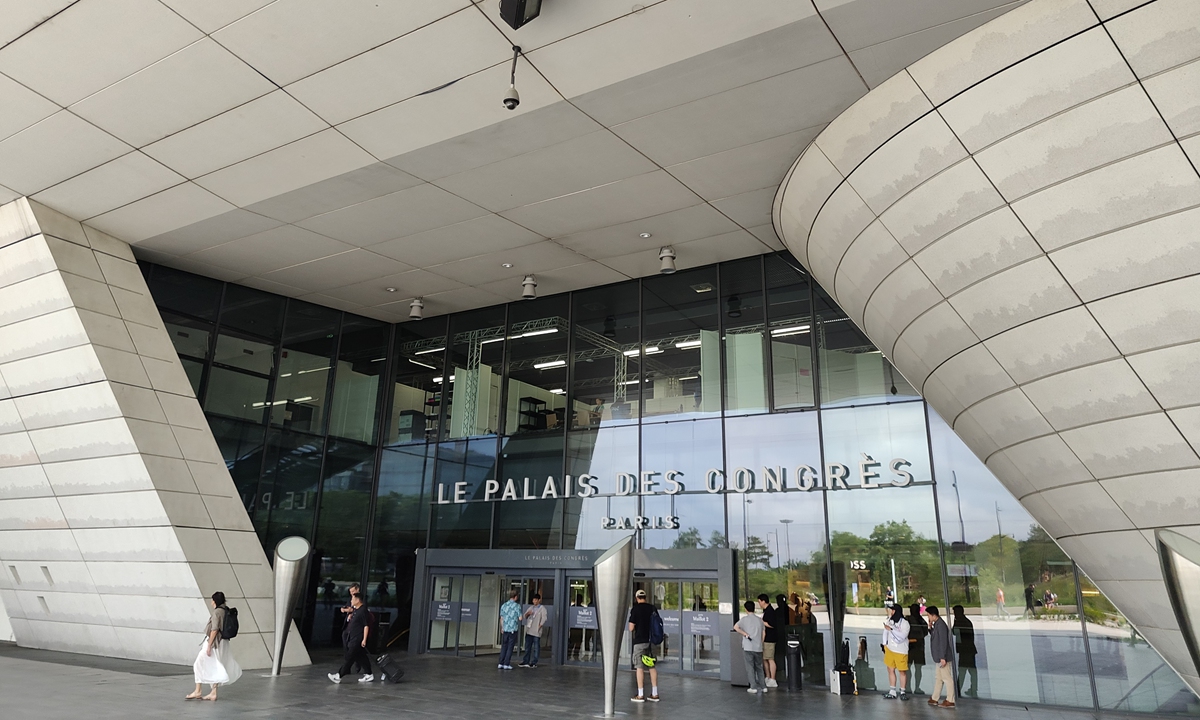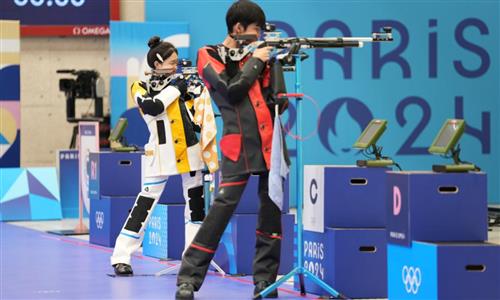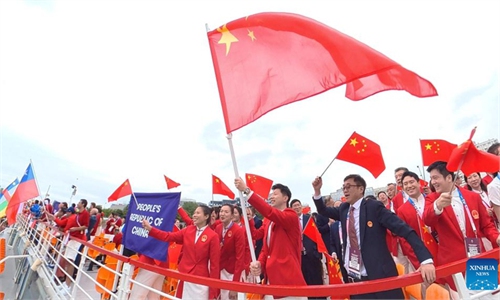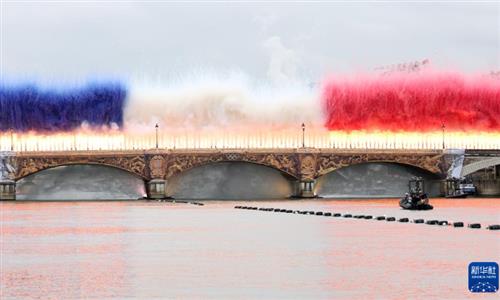SPORT / OLYMPICS
Navigating the Main Press Center of Paris Olympics: where simplicity meets complexity
Navigating MPC: where simplicity meets complexity

A gate to the Main Press Center of the Paris Olympic Photo: Zhang Zhen/GT
The overall impression of the Main Press Center (MPC) at the Paris Olympics remains somewhat unclear though reporters often take the bus to MPC early in the day to secure a seat.The importance of the MPC cannot be overstated. Its size, functional layout, and even floor design significantly impact journalists' efficiency, as it is the largest hub for journalists during the Games.
The MPC's "simple yet complex" design — exhibitions and meetings on the first floor, office space on the second, and news agency areas on the third — features contradictions that make its purpose hard to define.
Next to the MPC is the Olympic transport hub, where reporters catch shuttles to venues. Without volunteer guides, they use an app for route and schedule info. Media shuttles, using dedicated lanes, are faster than public transport.
Unlike other venues or places like Paris' Charles de Gaulle Airport, the MPC's exterior is not adorned with large-scale pink, purple, or blue decorations; it appears relatively plain.
Before entering the MPC, journalists must go through security checks and have their ID codes scanned by staff — unlike at the Beijing 2022 Winter Olympics and the Hangzhou Asian Games in 2023, there is no facial recognition requirement at the Paris 2024 Olympics.
The security screening area occupies most of the first floor of the MPC, so after passing through security (ground floor), journalists can only proceed directly to the first floor.
The MPC is divided into three floors: The first floor mainly hosts press conference halls and sponsor booths, with "food corners" on either side. These "food corners" are simplified cafeterias with a few round tables and chairs, offering burgers, sandwiches, and rice dishes for a quick bite.
Despite its spaciousness, the MPC feels sparse due to few functional areas, though numerous, often redundant information desks and offices fill the space.
One of the reporters, who came to the MPC to resolve an account issue, found themselves running up and down the building, as the similar functions of the various desks made the straightforward task unnecessarily complicated.
For most journalists, the second floor serves as their primary workspace, with many desks and chairs provided. These areas are not specifically designated for writers or photographers.
Scattered information desks, technical support areas, and photographer services disrupt the layout, causing confusion for journalists and making it hard to find a seat, leading to inefficient navigation.
The third floor is occupied by major news agencies and photo agencies, while the basement features a large information desk and even operational shops, which is uncommon in other venue media centers.



